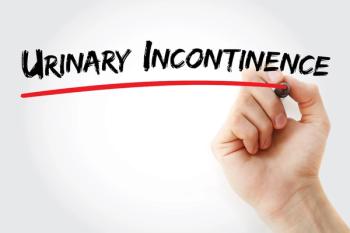
Diabetes App Linked With Reduction in All-Cause HCRU, Inpatient Hospitalization Rates
The Dario Diabetes Solution app was developed to help better manage type 2 diabetes.
Utilizing the
Results of the retrospective cohort study were
DDS is an app that was developed for type 2 diabetes (T2D) management. It combines a blood glucose meter and mobile app and allows patients to track their glucose levels in real time.
A total of 9779 patients were included in the analysis, which was carried out from January 2017 to April 2021. All participants were at least 18 years old and were receiving antidiabetic medications with at least 1 inpatient or 2 outpatient visits 30 or more days apart during the baseline period.
Baseline was considered 12 months the before index date or first DDS registration for users and first medical encounter in the quarter with medical claims for nonusers. Researchers followed up with patients for 1 year, and the user (n = 2445; mean[SD] age, 58.2 [10.6] years) and nonuser cohorts (n = 7334; mean age, 58.3 [12.5] years) were matched 1-to-3. All patients also had access to care 1 year before and 1 year after the index date. HCRU was defined as an inpatient hospitalization plus emergency department (ED) visits.
Analyses revealed:
- At 12 months, the mean all-cause HCRU rate was 0.475 ( 95% CI, 0.438-0.516) and 0.524 (95% CI, 0.500-0.549) events/year for users and nonusers, respectively
- Users had a 9.3% lower HCRU rate compared with nonusers (incidence rate ratio [IRR], 0.907; 95% CI, 0.826-0.996; P = .04)
- Mean all-cause inpatient hospitalization rate was 0.166 (95% CI, 0.147-0.186) and 0.216 (95% CI, 0.203-0.230) events/year for users and nonusers, respectively
- Users had a 23.5% lower inpatient hospitalization incident rate vs nonusers (IRR, 0.765; 95%CI, 0.671-0.873; P < .0001)
- ED visit rates were similar in both cohorts (IRR, 1.01; 95% CI, 0.907-1.125; P = .86)
“In this retrospective cohort study, utilizing DDS demonstrated a significantly greater reduction in all-cause HCRU and inpatient hospitalization rates during 12-month follow-up compared with nonusers receiving usual care,” the authors concluded.
Diabetes
Hospital inpatient care accounts for the largest component of diabetes-related medical expenditures, at 30%, followed by prescription medications to treat complications and antidiabetic agents and diabetes supplies.
On average, individuals who have T2D incur medical expenditures upwards of $16,700 per year, with over $9600 attributed to diabetes.
T2D can also lead to a host of other medical complications, which in turn can increase care costs cost and overall HCRU.
Major complications of diabetes include retinopathy, heart attack, stroke, kidney problems, and other chronic conditions.
These concurrent conditions also present significant disease burden that can lead to poor quality of life.
Reference
Wilson L, Malone D, Potukuchi P, et al. Comparison of all-cause healthcare resource utilization rates between patients with type 2 diabetes who use a digital diabetes solution versus non-users: a 12-month retrospective cohort study. Presented at: ISPOR 2023; May 7-10, 2023; Boston, MA. Abstract RWD43. https://www.ispor.org/heor-resources/presentations-database/presentation/intl2023-3666/127002
Newsletter
Stay ahead of policy, cost, and value—subscribe to AJMC for expert insights at the intersection of clinical care and health economics.





























































